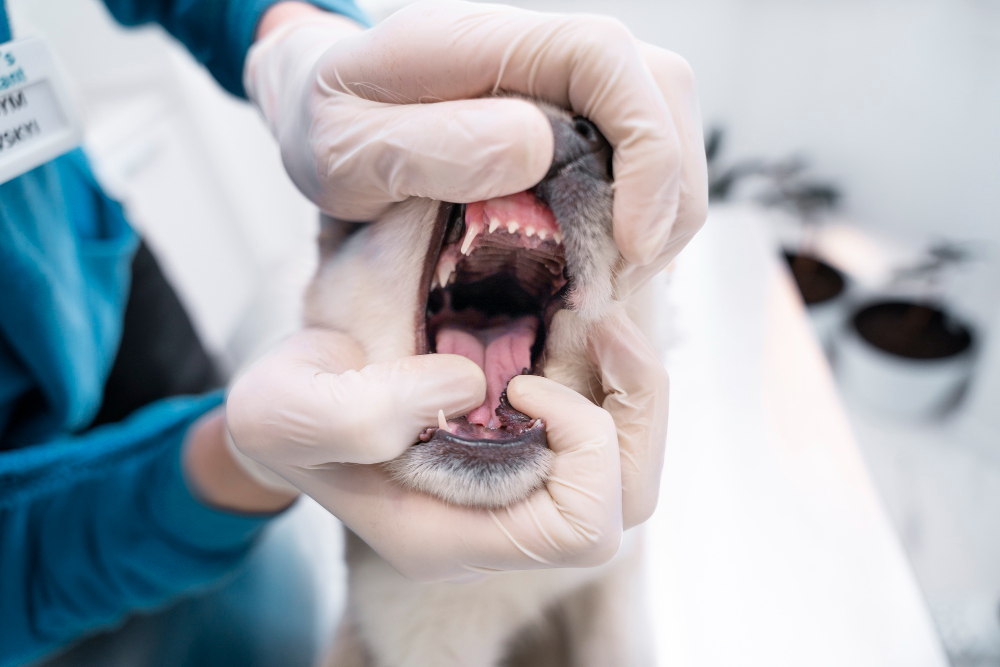How Many Teeth Do Dogs Have? A Complete Guide for Pet Owners

As pet parents, we often focus on what our dogs eat, how much they exercise, or how often they go to the vet—but one area we sometimes overlook is dental health. Just like humans, dogs rely on their teeth for daily life: eating, playing, and even defending themselves. So how many teeth do dogs have, and what should you know to keep those pearly whites healthy?
Let’s dig into the details, from puppy teething to adult dog dental care.
Puppy Teeth: The Baby Chompers
Puppies, like human babies, are born without teeth. Their first set of teeth—also called deciduous or “milk” teeth—begin to erupt at around 3 weeks of age. By the time they’re 6–8 weeks old, most puppies have a full set of 28 baby teeth.
These include:
- 12 incisors (6 on top, 6 on bottom)
- 4 canines (2 top, 2 bottom)
- 12 premolars (6 top, 6 bottom)
You may notice your puppy chewing more during this stage—this is completely normal and helps relieve teething discomfort.
Adult Dog Teeth: A Full Set for Life
As your puppy grows, their baby teeth will begin to fall out, making way for permanent adult teeth. This transition typically happens between 4 to 6 months of age. By the time your dog is about 6–7 months old, they should have a full set of 42 adult teeth.
Here’s the breakdown:
- 12 incisors
- 4 canines
- 16 premolars
- 10 molars
These adult teeth are meant to last a lifetime, which makes caring for them incredibly important.
Why Dog Dental Care Matters
A dog’s teeth do more than just chew kibble—they help with grooming, carrying toys, and interacting with their environment. Poor dental hygiene can lead to problems like:
- Bad breath
- Gum disease (gingivitis or periodontitis)
- Tooth decay or loss
- Pain while eating
- Infections that spread to the heart, liver, or kidneys
According to the American Veterinary Dental College, over 80% of dogs show signs of dental disease by age 3. That’s why prevention is key.
Tips to Keep Your Dog’s Teeth Clean
- Brush Regularly: Use a dog-safe toothbrush and enzymatic toothpaste at least 2–3 times a week.
- Dental Chews: These can reduce plaque buildup and freshen breath.
- Chew Toys: Tough rubber or dental toys help naturally scrape away tartar.
- Vet Visits: Schedule annual dental checkups with your vet. Professional cleanings may be needed to remove buildup below the gumline.
- Watch for Red Flags: Drooling, pawing at the mouth, or changes in eating habits may signal a dental issue.
When to See a Vet
If your dog shows signs of mouth pain, has persistently bad breath, or you notice loose or missing teeth, it’s time for a visit to Express Vets. Our team can examine your pet’s mouth, take dental X-rays, and recommend treatment options if needed.
Understanding how many teeth dogs have is more than trivia—it’s part of being a responsible pet parent. Whether you’re caring for a teething puppy or a senior dog, staying proactive with dental care can add years to your pet’s life and reduce the risk of painful (and costly) dental issues.
At Express Vets, we’re committed to helping you keep your dog happy, healthy, and smiling. For more pet health tips or to schedule a dental checkup, visit us at one of our convenient locations or call 678-EXPRESS.


















